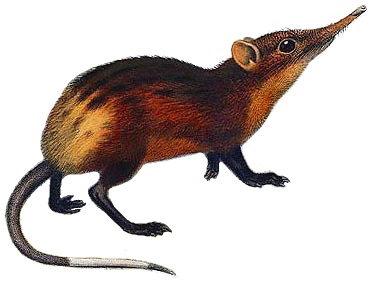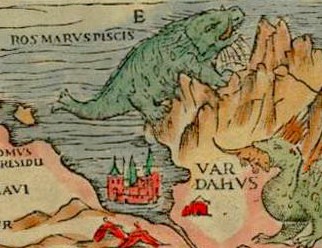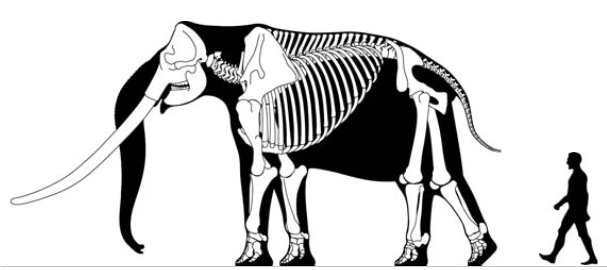|
Tusk
Tusks are elongated, continuously growing front teeth that protrude well beyond the mouth of certain mammal species. They are most commonly canine tooth, canine teeth, as with Narwhal, narwhals, chevrotains, musk deer, water deer, muntjac, pigs, peccary, peccaries, hippopotamuses and walruses, or, in the case of elephants, elongated incisors. Tusks share common features such as extra-oral position, growth pattern, composition and structure, and lack of contribution to ingestion. Tusks are thought to have adapted to the extra-oral environments, like dry or aquatic or arctic. In most tusked species both the males and the females have tusks although the males' are larger. Most mammals with tusks have a pair of them growing out from either side of the mouth. Tusks are generally curved and have a smooth, continuous surface. The male narwhal's straight single Helix, helical tusk, which usually grows out from the left of the mouth, is an exception to the typical features of tusks describ ... [...More Info...] [...Related Items...] OR: [Wikipedia] [Google] [Baidu] |
Narwhal
The narwhal (''Monodon monoceros'') is a species of toothed whale native to the Arctic. It is the only member of the genus ''Monodon'' and one of two living representatives of the family Monodontidae. The narwhal is a stocky cetacean with a relatively blunt snout, a large Melon (whale), melon, and a shallow ridge in place of a dorsal fin. Males of this species have a large () long tusk, which is a protruding left Canine tooth, canine thought to function as a weapon, a tool for feeding, in sexual selection, attracting mates or sensing water salinity. Specially adapted slow-twitch muscles, along with the jointed neck vertebrae and shallow dorsal ridge allow for easy movement through the Arctic environment, where the narwhal spends extended periods at great depths. The narwhal's geographic range overlaps with that of the similarly built and closely related beluga whale, and the animals are known to interbreed. Narwhals inhabit the Arctic waters of Canada, Greenland and Russia. ... [...More Info...] [...Related Items...] OR: [Wikipedia] [Google] [Baidu] |
Elephant
Elephants are the largest living land animals. Three living species are currently recognised: the African bush elephant ('' Loxodonta africana''), the African forest elephant (''L. cyclotis''), and the Asian elephant ('' Elephas maximus''). They are the only surviving members of the family Elephantidae and the order Proboscidea; extinct relatives include mammoths and mastodons. Distinctive features of elephants include a long proboscis called a trunk, tusks, large ear flaps, pillar-like legs, and tough but sensitive grey skin. The trunk is prehensile, bringing food and water to the mouth and grasping objects. Tusks, which are derived from the incisor teeth, serve both as weapons and as tools for moving objects and digging. The large ear flaps assist in maintaining a constant body temperature as well as in communication. African elephants have larger ears and concave backs, whereas Asian elephants have smaller ears and convex or level backs. Elephants are scatter ... [...More Info...] [...Related Items...] OR: [Wikipedia] [Google] [Baidu] |
Ivory
Ivory is a hard, white material from the tusks (traditionally from elephants) and Tooth, teeth of animals, that consists mainly of dentine, one of the physical structures of teeth and tusks. The chemical structure of the teeth and tusks of mammals is the same, regardless of the species of origin, but ivory contains structures of mineralised collagen. The trade in certain teeth and tusks other than elephant is well established and widespread; therefore, "ivory" can correctly be used to describe any mammalian teeth or tusks of commercial interest which are large enough to be carved or scrimshawed. Besides natural ivory, ivory can also be produced synthetically, hence (unlike natural ivory) not requiring the retrieval of the material from animals. Tagua nuts can also be carved like ivory. The trade of finished goods of ivory products has its origins in the Indus Valley. Ivory is a main product that is seen in abundance and was used for trading in Harappan civilization. Finished iv ... [...More Info...] [...Related Items...] OR: [Wikipedia] [Google] [Baidu] |
Walrus
The walrus (''Odobenus rosmarus'') is a large pinniped marine mammal with discontinuous distribution about the North Pole in the Arctic Ocean and subarctic seas of the Northern Hemisphere. It is the only extant species in the family Odobenidae and genus ''Odobenus''. This species is subdivided into two subspecies: the Atlantic walrus (''O. r. rosmarus''), which lives in the Atlantic Ocean, and the Pacific walrus (''O. r. divergens''), which lives in the Pacific Ocean. Adult walrus are characterised by prominent tusks and whiskers, and considerable bulk: adult males in the Pacific can weigh more than and, among pinnipeds, are exceeded in size only by the two species of elephant seals. Walrus live mostly in shallow waters above the continental shelves, spending significant amounts of their lives on the sea ice looking for benthic bivalve molluscs. Walruses are relatively long-lived, social animals, and are considered to be a " keystone species" in the Arctic marine regio ... [...More Info...] [...Related Items...] OR: [Wikipedia] [Google] [Baidu] |
African Bush Elephant
The African bush elephant (''Loxodonta africana''), also known as the African savanna elephant, is a species of elephant native to sub-Saharan Africa. It is one of three extant elephant species and, along with the African forest elephant, one of two extant species of African elephant. It is the largest living terrestrial animal, with fully grown bulls reaching an average shoulder height of and a body mass of ; the largest recorded specimen had a shoulder height of and an estimated body mass of . The African bush elephant is characterised by its long prehensile trunk with two finger-like processes; a convex back; large ears which help reduce body heat; and sturdy tusks that are noticeably curved. The skin is grey with scanty hairs, and bending cracks which support thermoregulation by retaining water. The African bush elephant inhabits a variety of habitats such as forests, grasslands, woodlands, wetlands and agricultural land. It is a mixed herbivore feeding mostly on grasse ... [...More Info...] [...Related Items...] OR: [Wikipedia] [Google] [Baidu] |
Proboscidea
Proboscidea (; , ) is a taxonomic order of afrotherian mammals containing one living family (Elephantidae) and several extinct families. First described by J. Illiger in 1811, it encompasses the elephants and their close relatives. Three living species of elephant are currently recognised: the African bush elephant, the African forest elephant, and the Asian elephant. Extinct members of Proboscidea include the deinotheres, mastodons, gomphotheres and stegodonts. The family Elephantidae also contains several extinct groups, including mammoths and '' Palaeoloxodon''. Proboscideans include some of the largest known land mammals, with the elephant '' Palaeoloxodon namadicus'' and mastodon ''"Mammut" borsoni'' suggested to have body masses surpassing , rivalling or exceeding paraceratheres (the otherwise largest known land mammals) in size. The largest extant proboscidean is the African bush elephant, with a world record of size of at the shoulder and . In addition to thei ... [...More Info...] [...Related Items...] OR: [Wikipedia] [Google] [Baidu] |
Palaeoloxodon
''Palaeoloxodon'' is an extinct genus of elephant. The genus originated in Africa during the Early Pleistocene, and expanded into Eurasia at the beginning of the Middle Pleistocene. The genus contains the largest known species of elephants, with mature bulls over tall at the shoulders and over in weight, representing among the largest land mammals ever, including the African '' Palaeoloxodon recki'', the European straight-tusked elephant (''Palaeoloxodon antiquus'') and the South Asian '' Palaeoloxodon namadicus. P. namadicus'' has been suggested to be the largest known land mammal by some authors based on extrapolation from fragmentary remains, though these estimates are highly speculative. In contrast, the genus also contains many species of dwarf elephants that evolved via insular dwarfism on islands in the Mediterranean, some like '' Palaeoloxodon falconeri'' less than in shoulder height as fully grown adults, making them the smallest elephants known. The genus has a long ... [...More Info...] [...Related Items...] OR: [Wikipedia] [Google] [Baidu] |
Asian Elephant
The Asian elephant (''Elephas maximus''), also known as the Asiatic elephant, is the only living ''Elephas'' species. It is the largest living land animal in Asia and the second largest living Elephantidae, elephantid in the world. It is characterised by its long Elephant trunk, trunk with a single finger-like processing; large tusks in males; laterally folded large ears and wrinkled grey skin that is partly depigmented on the trunk, ears or neck. Adult males average in weight and females . It has a large and well developed neocortex of the brain, is highly intelligent and self-aware being able to display behaviours associated with grief, learning and greeting. Three subspecies are recognised—''Sri Lankan elephant, E. m. maximus'', Indian elephant, ''E. m. indicus'' and ''Sumatran elephant, E. m. sumatranus''. The Asian elephant is distributed in the Indian subcontinent and Southeast Asia, from India in the west to Borneo in the east, and Nepal in the north to Sumatra in th ... [...More Info...] [...Related Items...] OR: [Wikipedia] [Google] [Baidu] |
Mammoth
A mammoth is any species of the extinct elephantid genus ''Mammuthus.'' They lived from the late Miocene epoch (from around 6.2 million years ago) into the Holocene until about 4,000 years ago, with mammoth species at various times inhabiting Africa, Asia, Europe, and North America. Mammoths are distinguished from living elephants by their (typically large) spirally twisted tusks and in some later species, the development of numerous adaptions to living in cold environments, including a thick layer of fur. Mammoths and Asian elephants are more closely related to each other than they are to African elephants. The oldest mammoth representative, '' Mammuthus subplanifrons'', appeared around 6 million years ago during the late Miocene in what is now southern and Eastern Africa.'''' Later in the Pliocene, by about three million years ago, mammoths dispersed into Eurasia, eventually covering most of Eurasia before migrating into North America around 1.5–1.3 million year ... [...More Info...] [...Related Items...] OR: [Wikipedia] [Google] [Baidu] |
Dicynodont
Dicynodontia is an extinct clade of anomodonts, an extinct type of non-mammalian therapsid. Dicynodonts were herbivores that typically bore a pair of tusks, hence their name, which means 'two dog tooth'. Members of the group possessed a horny, typically toothless beak, unique amongst all synapsids. Dicynodonts first appeared in Southern Pangaea during the mid-Permian, ca. 270–260 million years ago, and became globally distributed and the dominant herbivorous animals in the Late Permian, ca. 260–252 Mya. They were devastated by the end-Permian Extinction that wiped out most other therapsids ca. 252 Mya. They rebounded during the Triassic but died out towards the end of that period. They were the most successful and diverse of the non-mammalian therapsids, with over 80-90 genera known, varying from rat-sized burrowers to elephant-sized browsers. Characteristics The dicynodont skull is highly specialised, light but strong, with the synapsid temporal openings at the rear o ... [...More Info...] [...Related Items...] OR: [Wikipedia] [Google] [Baidu] |
Stegodon
''Stegodon'' (from the Ancient Greek στέγω (''stégō''), meaning "to cover", and ὀδούς (''odoús''), meaning "tooth", named for the distinctive ridges on the animal's molars) is an extinct genus of proboscidean, related to elephants. It was originally assigned to the family Elephantidae along with modern elephants but is now placed in the extinct family Stegodontidae. Like elephants, ''Stegodon'' had teeth with plate-like lophs that are different from those of more primitive proboscideans like gomphotheres and mammutids. Fossils of the genus are known from Africa and across much of Asia, as far southeast as Timor (with a single record in southeast Europe). The oldest fossils of the genus are found in Late Miocene strata in Asia, likely originating from the more archaic ''Stegolophodon,'' subsequently migrating into Africa. While the genus became extinct in Africa during the Pliocene, ''Stegodon'' persisted in South, Southeast and Eastern Asia into the Late Pleisto ... [...More Info...] [...Related Items...] OR: [Wikipedia] [Google] [Baidu] |









